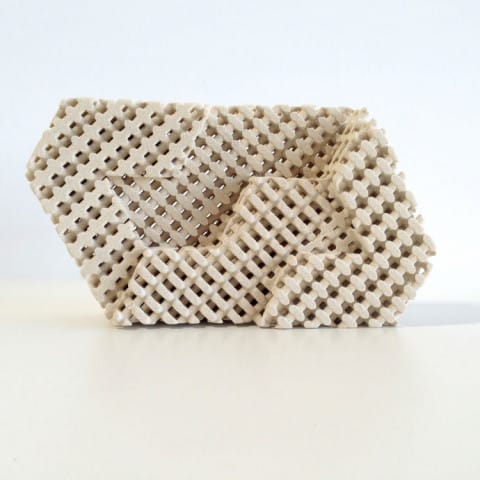![A fancy ceramic brick produced with Tethon 3D resin, but could this be made of metal in the future? [Source: Tethon 3D]](https://fabbaloo.com/wp-content/uploads/2020/05/tethon3d-brick_img_5eb0a8b851883.jpg)
Tethon 3D is apparently going to manufacture a 3D printer.
This seems a bit out of character for the up-to-now third party resin provider.
The Omaha-based company has been manufacturing unusual 3D printer resins for several years now, specializing in ceramic resins. We recently wrote about their products in a lot more detail.
Those products have been quite beneficial to the 3D print community as most manufacturer-supplied resins tend to be rather pedestrian in nature. Tethon 3D has partly filled the exotic resin gap with their products.
But then, this:
“Tethon Corporation (‘Tethon3D’) announces the award of a grant from the Nebraska Department of Economic Development to pursue the design and production of a ceramic/metal 3D printer. The project ‘A Novel DLP 3D Printer Optimized for Ceramics and Metals’ begins immediately. This 3D printer will be the first commercially available desktop DLP printer designed specifically for ceramic and metal additive manufacturing.”
This is quite a switch in direction for the company.
In most cases, we see a 3D printer manufacturer branch out into material production, mostly in order to capitalize an opportunity with their clients. But this move is in the other direction; I don’t think I’ve heard of a 3D printer materials producer adding a printer. Nevertheless, they are proceeding on this project.
I think I can guess why they’ve made this move, and it could have something to do with the nature of the project.
What kind of 3D printer are they focusing on? Tethon 3D’s CEO Karen Linder explains:
“While there are more than a dozen SLA and DLP 3D printers that work well and are compatible with our UV curable ceramic and metal materials, they are all designed for plastic polymers. By optimizing a DLP printer for ceramics and metals and formulating our materials specifically for this enhanced printer, the industry can produce stronger and higher resolution ceramic and metal 3D printed parts with the convenience and lower expenses of desktop DLP technology.”
Aha – they intend on making a metal – resin 3D printer, which I’m not sure exists anywhere else today. I imagine it would work in a manner similar to conventional polymer resin 3D printing, except that the resin would be deeply infused with fine metal powder.
The resulting prints would be “green” parts that could then be fired in a furnace after printing to remove the binder and fuse the metal particles together. This “cold metal printing” approach has been used by several other 3D printer companies, including Desktop Metal. But those other companies tend to use the filament extrusion process, not the photopolymer resin process.
The prints on the hypothetical Tethon 3D machine could be of far greater resolution than from the alternative inexpensive 3D metal printing processes, and it’s even possible the printing itself could be faster.
I think Tethon 3D is on to something here.
One of the reasons why companies like Desktop Metal, Markforged and others suddenly appeared in the inexpensive metal 3D printing space is that the market for metal 3D printing has exploded, with significant interest now coming from the aerospace, automotive and medical industries. Those companies emerged to capitalize on that opportunity.
And, so too, it seems, is Tethon 3D.











A research thesis details the incredibly complex world of volumetric 3D printing. We review the highlights.